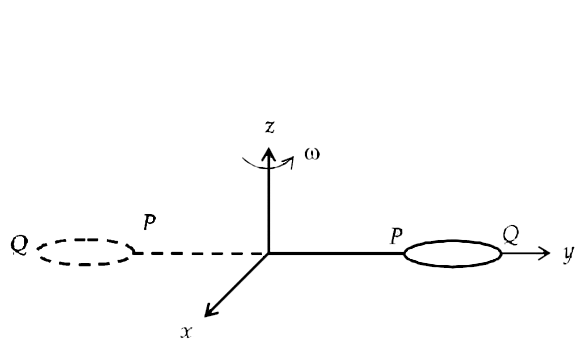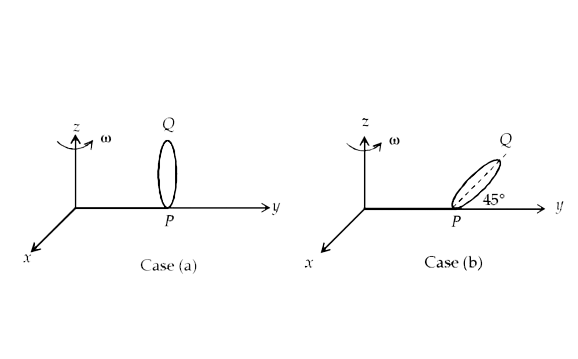Trace the changes in water and carbohydrate contents of the glomerulus filtrate as it passes through the renal tubules of a person suffering from diabetes mellitus.
To trace the changes in water and carbohydrate contents of the glomerulus filtrate as it passes through the renal tubules of a person suffering from diabetes mellitus, we can break down the process into several steps:
1. Increased Blood Glucose Levels: In diabetes mellitus, the blood glucose levels are significantly elevated due to insufficient insulin production or action. This leads to a higher concentration of glucose in the blood.
Hint: Remember that diabetes mellitus is characterized by high blood sugar levels.
2. Filtration in the Glomerulus: As blood passes through the glomerulus, the high concentration of glucose in the blood results in a filtrate that contains an increased amount of glucose. The glomerulus filters blood, and due to the high glucose levels, the filtrate entering the Bowman's capsule is rich in glucose.
Hint: Think about how the glomerulus works; it filters blood, and if there's more glucose in the blood, more glucose will be in the filtrate.
3. Proximal Convoluted Tubule (PCT) Reabsorption: Normally, glucose is reabsorbed in the proximal convoluted tubule (PCT). However, in diabetes mellitus, the amount of glucose filtered exceeds the reabsorption capacity of the PCT (the renal threshold for glucose). As a result, not all glucose is reabsorbed, leading to glucose remaining in the filtrate.
Hint: Consider the concept of renal threshold and how it affects glucose reabsorption.
4. Glycosuria: The presence of excess glucose in the urine is termed glycosuria. This occurs because the glucose that is not reabsorbed in the PCT is excreted in the urine.
Hint: Glycosuria is a key term to remember; it indicates the presence of glucose in urine.
5. Osmotic Effect on Water: The presence of excess glucose in the filtrate creates an osmotic effect, which attracts water. This leads to an increase in the volume of urine produced, as water follows the glucose into the urine.
Hint: Think about how solutes like glucose can influence water movement due to osmosis.
6. Increased Urine Output (Polyuria): The combination of glycosuria and the osmotic effect of glucose leads to polyuria, which is characterized by excessive urine production. This results in the individual experiencing increased urination.
Hint: Polyuria is a common symptom of diabetes; it refers to the production of large volumes of urine.
7. Decreased Reabsorption of Water: Due to the osmotic effect of glucose, the reabsorption of water in the renal tubules is decreased. This means that less water is retained in the body, contributing to dehydration in individuals with diabetes mellitus.
Hint: Consider how the body regulates water balance and how diabetes affects this process.
Summary:
In summary, in a person suffering from diabetes mellitus, the glomerulus filtrate contains increased levels of glucose due to elevated blood glucose levels. This leads to glycosuria and polyuria, as the excess glucose in the filtrate attracts water, resulting in decreased reabsorption of water and increased urine output.
In summary, in a person suffering from diabetes mellitus, the glomerulus filtrate contains increased levels of glucose due to elevated blood glucose levels. This leads to glycosuria and polyuria, as the excess glucose in the filtrate attracts water, resulting in decreased reabsorption of water and increased urine output.
Topper's Solved these Questions
- BOOK - ICSECHAPTER - EXCRETORY PRODUCTS AND THEIR ELIMINATIONEXERCISE - TEST YOUR PROGRESS ( HIGHER ORDER THINKING SKILLS QUESTIONS (HOTS))7videos
EXCRETORY PRODUCTS AND THEIR ELIMINATION
- BOOK - ICSECHAPTER - EXCRETORY PRODUCTS AND THEIR ELIMINATIONEXERCISE - NCERT EXERCISES WITH ANSWER8videos
EXCRETORY PRODUCTS AND THEIR ELIMINATION
- BOOK - ICSECHAPTER - EXCRETORY PRODUCTS AND THEIR ELIMINATIONEXERCISE - TEST YOUR PROGRESS ( VERY SHORT ANSWER TYPE QUESTIONS )48videos
EXCRETORY PRODUCTS AND THEIR ELIMINATION
- BOOK - ICSECHAPTER - ENZYMES EXERCISE - REVIEW QUESTIONS (LONG ANSWER TYPE QUESTIONS)6videos
ENZYMES
- BOOK - ICSECHAPTER - KINGDOM FUNGI EXERCISE - REVIEW QUESTIONS (LONG ANSWER TYPE QUESTIONS)5videos
KINGDOM FUNGI
Similar Questions
The diagram given below is that of a structure present in a human kidney. Study the same and answer the questions that follow:

Name the substance which may be present in the fluid in part 2' if a person suffers from Diabetes mellitus.View SolutionThe diagram given below is that of a structure present in a human kidney. Study the same and answer the questions that follows :

(i) Name the structure represented in the diagram.
(ii) What is the liquid entering part T called? Name two substances present in this liquid that are reabsorbed in the tubule.
(iii) What is the fluid that comes to part '2' called? Name the main nitrogenous waste in it.
(iv) Mention the three main steps involved in the formation of the fluid mentioned in (iii) above.
(v) Name the substance which may be present in the fluid part '11 if a person suffer from diabetes mellitus.View Solution
Knowledge Check
- Question 1 - Select One
Filtrate in the nephron is reabsorbed from the renal tubules back into the :
AglomerulusBperitubular capillariesCafferent arterioleDefferent arteriole
In case of a person suffering from syphilis, change formation occurs during
View SolutionIf the person shows the production of interferons in his body, changes are that he is suffering from
View SolutionA person had roti and dal for his lunch. Trace the changes in those during its passage through the alimentary canal.
View SolutionWhen Cl2 is passed through hot NaOH , oxidation number of Cl changes from
View SolutionThe general motion of a rigid body can be considered to be a combination of (i) a motion of its centre of mass about an axis, and (ii) its motion about an instantaneous exis passing through the centre of mass. These axes need not be stationary. Consider, for example, a thin uniform disc welded (rigidly fixed) horizontally at its rim to a massless, stick as shown in the figure. When the disc-stick system is rotated about the origin on a horizontal frictionless plane with angular speed ω the motion at any instant can be taken as a combination of (i) a rotation of the disc through an instantaneous vertical axis passing through its centre of mass (as is seen from the changed orientation of points P and Q). Both these motions have the same angular speed ω in this case

Now consider two similar system as shown in the figure: Case (a) the disc with its face vertical and parallel to x-z plane, Case (b) the disc with its face making an angle of 45∘ with x-y plane and its horizontal diameter parallel to x-axis. In both the cases, the disc is welded at point P, and the systems are rotated with constant angular speed ω about the z-axis.

Which of the following statements regarding the angular speed about the instantaneous axis (passing through the centre of mass) is correct?View SolutionThe general motion of a rigid body can be considered to be a combination of (i) a motion …. of its centre of mass about an axis, and (ii) its motion about an instantaneous axis passing through the centre of mass. These axes need not be stationary. Consider, for example, a thin uniform disc welded (rigidly fixed) horizontally at its rim to a massless stick, as shown in the figure. When the disc-stick system is rotated about the origin on a horizontal frictionless plane with angular speed ω , the motion at any instant can be taken as a combination of (i) a rotation of the centre of mass of the disc about the z-axis, and (ii) a rotation of the disc through an instantaneous vertical axis passing through its centre of mass (as is seen from the changed orientation of points P and Q). Both these motions have the same angular speed ω in this case.

Now consider two similar systems as shown in the figure: case (a) the disc with its face vertical and parallel to x-z plane, case (b) the disc with its face making an angle of 45° with x-y plane and its horizontal diameter parallel to x-axis. In both the cases, the disc is welded at point P, and the system are rotated with constant angular speed ω about the z-axis
Which of the following statement regarding the angular speed about the instantaneous axis (passing through the centre of mass) is correct ?View SolutionEfferent arteriole emerging from glomerulus forms fine capillary network around renal tubule known as____ capillaries.
View Solution

